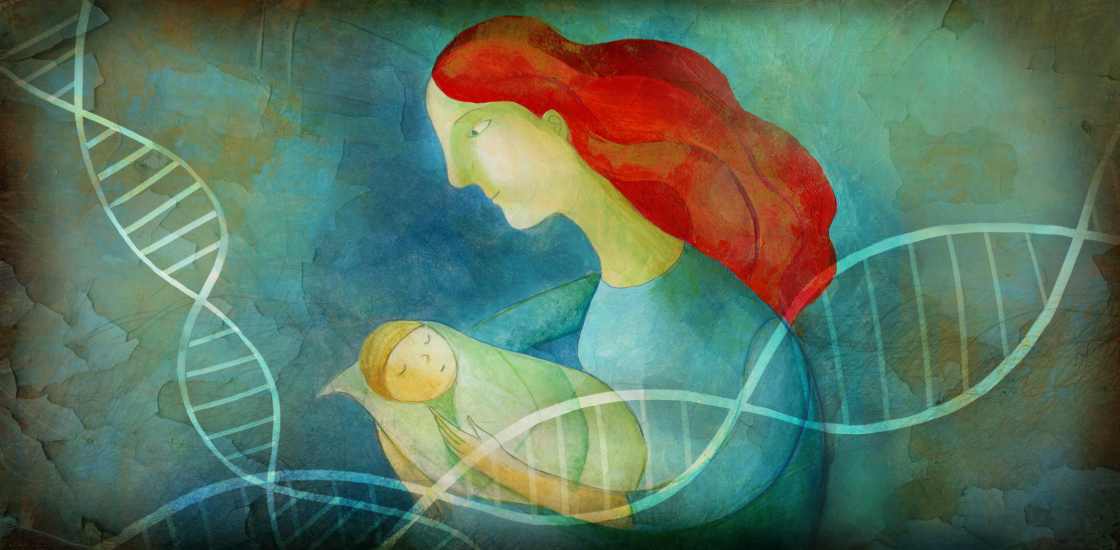THIS ARTICLE IS MORE THAN FIVE YEARS OLD
This article is more than five years old. Autism research — and science in general — is constantly evolving, so older articles may contain information or theories that have been reevaluated since their original publication date.
A rearrangement on chromosome 16 seen in roughly 1 percent of people with autism usually occurs on the chromosome inherited from the mother, according to a study published 31 December in the American Journal of Human Genetics1.
Other studies have found that autism-linked mutations are more likely to be inherited from the mother than the father. The new study adds an intriguing twist to this evidence, showing the same trend for spontaneous mutations.
Deletions or duplications — dubbed copy number variations (CNVs) — of the 16p11.2 chromosomal region are among the most common structural variations tied to autism. They usually arise spontaneously, affecting children but not their parents.
Lead researcher Evan Eichler says he first expected that the sperm with a CNV in this region might die, resulting in the maternal bias. Instead, his team found that the bias results from the mutation occurring at a higher rate in eggs than in sperm. “When we first saw [the evidence], we were a little surprised,” says Eichler, professor of genome sciences at the University of Washington in Seattle.
The study also hints at why some people with deletions in the region have more severe symptoms than others. Eichler’s team found that people with a deletion or duplication of 16p11.2 who also carry other CNVs have lower intelligence quotients (IQs) than those with a 16p11.2 CNV alone. Most of these secondary CNVs are inherited from the mother. “The data strongly implicate additional mutations transmitted from mothers,” says Eichler.
This finding supports the theory, called the female protection effect, that it takes more severe mutations to lead to autism in women than it does in men. In this case, mothers may pass mutations on to their children without having autism themselves.
Spontaneous trends:
The new study looked at the DNA of 90 people with a deletion in 16p11.2 and 36 people with a duplication within the region, as well as their parents and siblings. Participants also underwent a series of physical and psychological exams.
Among deletion carriers, 66 have de novo mutations, meaning the CNV is present in the individual, but not in either of his or her parents. In 59 of these cases, the CNV arises in the copy of the chromosome inherited from the mother.
Among duplication carriers, 12 of 13 de novo cases are on the maternal chromosome. By contrast, inherited CNVs in the region are equally likely to come from either parent.
The finding is intriguing, as it suggests that the maternal DNA is more prone to rearrangement when germ cells divide than is paternal DNA. The reason for this risk is unclear, but studies have suggested that in women, DNA tends to recombine more often in the middle of chromosomes — where 16p11.2 lies — rather than at the ends as tends to happen in men.
This evidence of maternal bias is “striking,” says Michael Ronemus, research assistant professor at Cold Spring Harbor Laboratory in New York, who was not involved in the study. “That has been seen at other loci, but never (to my knowledge) with such a strong bias,” he wrote in an email.
Second hits:
Carrying a CNV in 16p11.2 is associated with a wide range of features. “It’s the most common autism CNV out there, it’s enormous, and yet the phenotypes associated with it are so variable,” says Ronemus.
The cognitive abilities of people with CNVs in the region consistently shift to a lower range than those of their parents, which might explain why only some people with the CNV have intellectual disability. For example, an individual whose parents have high IQs may have a lower IQ that is still in the normal range, whereas someone whose parents have average IQs would end up with intellectual disability.
The new study explores another possibility for the diversity of features by looking for additional mutations. Among the participants with 16p11.2 CNVs, 88 have at least one other small CNV and 44 have more than one. Of these 158 secondary CNVs, 81 disrupt genes, including 11 that disrupt genes linked to autism.
Eichler and his team were able to determine the parent of origin for 87 CNVs, and found that 52 came from the mother. This maternal bias is especially true for deletions, which are generally more harmful than duplications: 32 secondary deletions came from the mother and 14 came from the father.
The more CNVs an individual carries, the lower his or her IQ, the researchers found. This correlation is barely statistically significant, but provides one possible explanation for the wide variation in IQ.
To flesh out this picture of additional factors, Eichler’s team aims to pursue whole-genome sequencing on these same participants. This in-depth approach would provide a complete picture of all possible mutations, Eichler says, including ones that mutate, insert or delete single nucleotides.

By joining the discussion, you agree to our privacy policy.